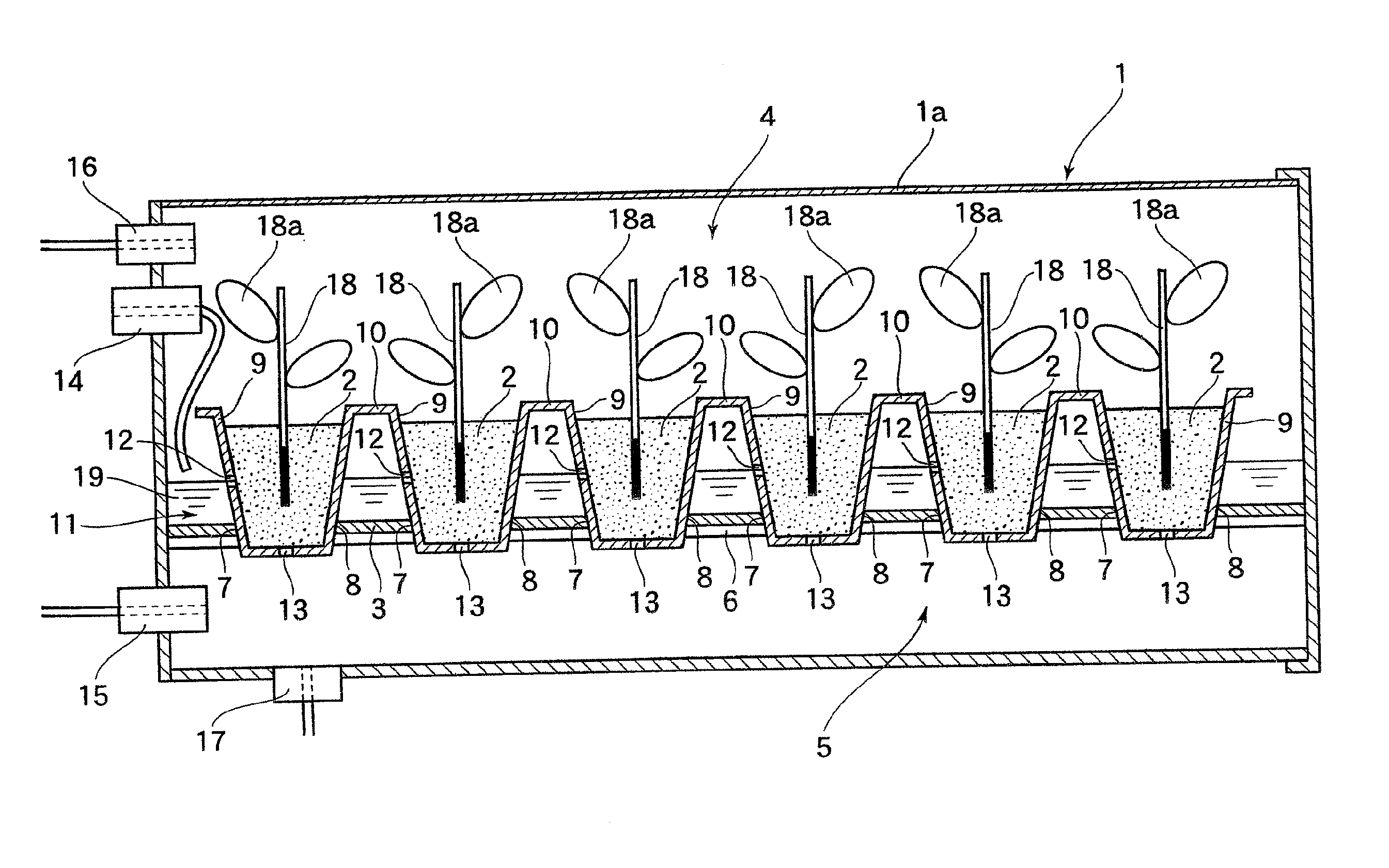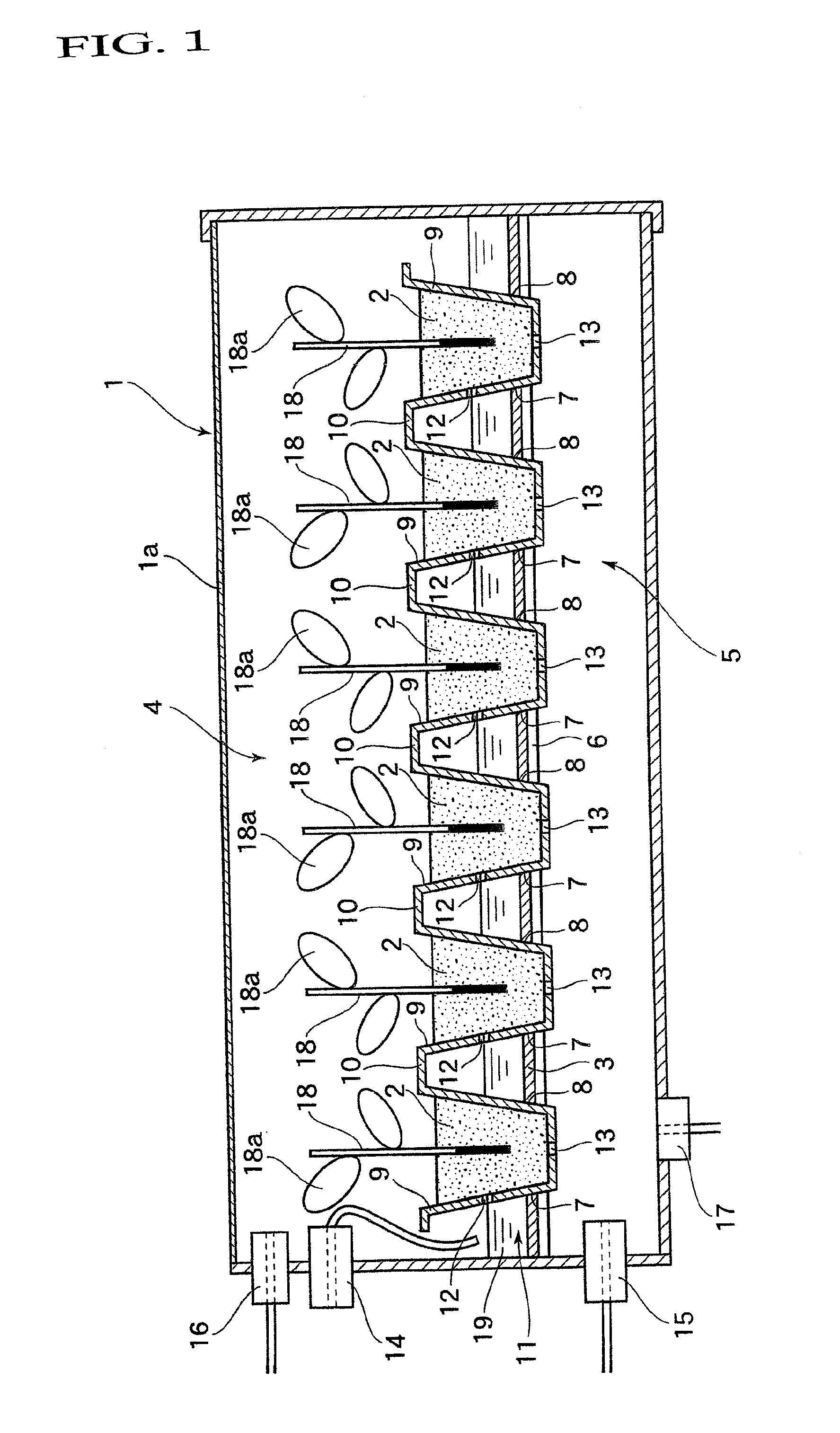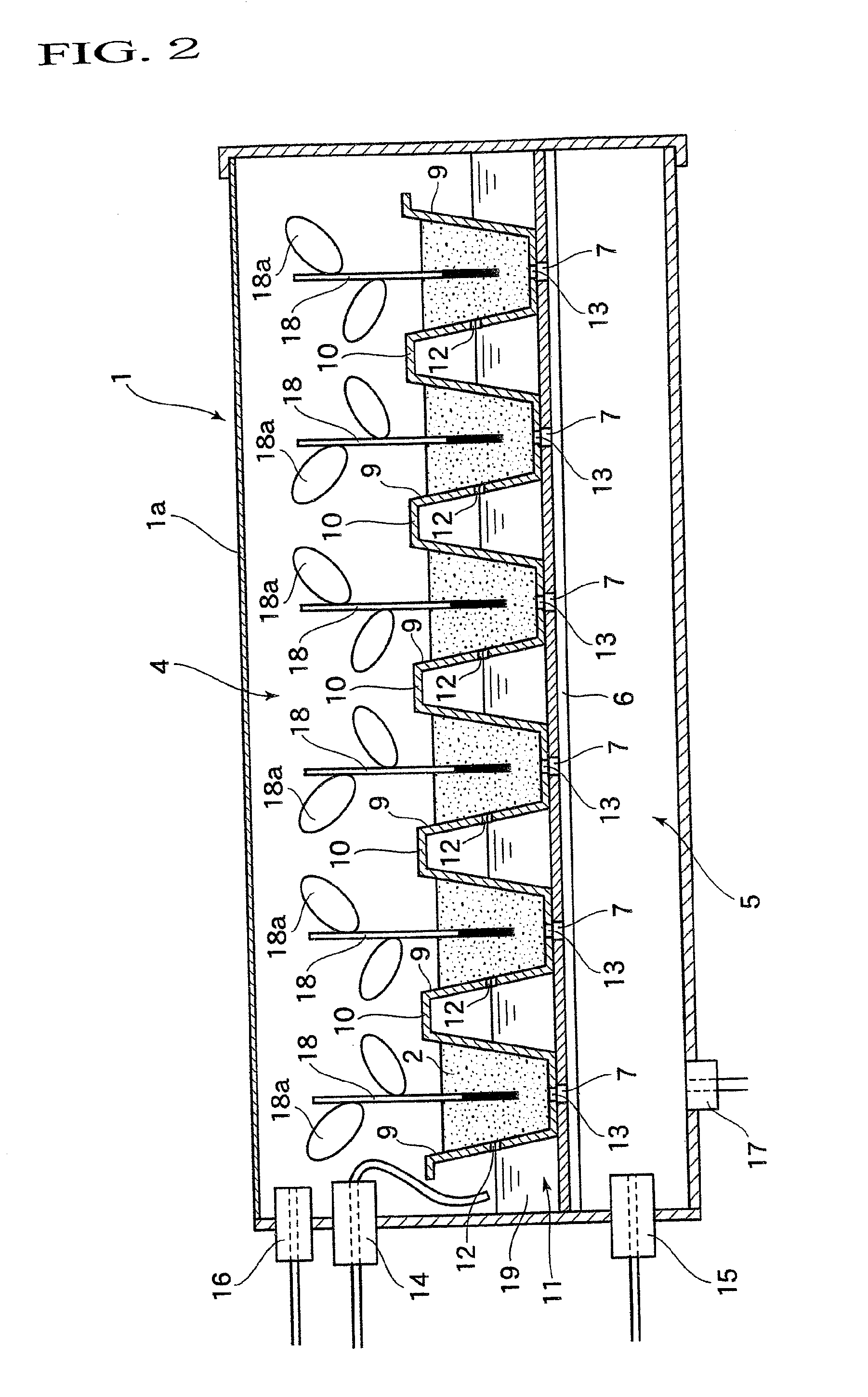Container for culture of plant, method for culture of plant and method of production of cutting seedling
a technology for cultivating containers and plants, applied in horticulture, agriculture, agriculture gas emission reduction, etc., can solve the problems of reducing the productivity of rooted cuttings, reducing the production efficiency of rooted cuttings, and withering and weakening of cuttings, so as to promote the formation of plant roots, and enhance the rooting rate and the extension of roots in the plant cultivated in the medium.
- Summary
- Abstract
- Description
- Claims
- Application Information
AI Technical Summary
Benefits of technology
Problems solved by technology
Method used
Image
Examples
example 1
[0086]Current branches of Malus pumila var. domestica were used as the cuttings 18.
[0087]Meanwhile, as a plant cultivation container, a plant cultivation container (maximum dimension: length 48 cm×width 34 cm×height 20.8 cm) that was made of polycarbonate, had the shape illustrated in FIG. 1, and had the following structure was used. In the structure of the plant cultivation container, the bottom portions of the commercially available pots 9 (dimension of upper portions: length 3 cm×width 3 cm; depth: 4.5 cm) were fitted to the fitting holes 8 on the partition wall 3 in the fluid tight manner so that only the vent holes 7 opened in the bottom surfaces of the pots 9 could communicate with the low-humidity chamber 5 and that the water supply ports 12 opened in the circumferential walls of the pots 9 could be located on the high-humidity chamber 4 side. Here, in the pots 9, the vent holes 7 had a diameter of ø1.2 cm, and the water supply ports 12 had a diameter of ø0.5 cm, and were ope...
example 2
[0094]Current branches of Benifuki, which is one kind of Camellia sinennsis were used as the cuttings 18.
[0095]Meanwhile, as a plant cultivation container, a plant cultivation container (maximum dimension: length 48 cm×width 34 cm×height 14.8 cm) that was made of polycarbonate, had the shape illustrated in FIG. 1, and had the following structure was used. In the structure of the plant cultivation container, the bottom portions of the commercially available pots 9 (dimension of upper portions: length 3 cm×width 3 cm; depth: 4.5 cm) were fitted to the fitting holes 8 on the partition wall 3 in the fluid tight manner so that only the vent holes 7 opened in the bottom surfaces of the pots 9 could communicate with the low-humidity chamber 5 and that the water supply ports 12 opened in the circumferential walls of the pots 9 could be located on the high-humidity chamber 4 side. Here, in the pots 9, the vent holes 7 had a diameter of 01.2 cm, and the water supply ports 12 had a diameter of...
example 3
[0101]Current branches of Olea europaea were used as the cuttings 18.
[0102]In this example, the above-mentioned cuttings 18 were cultivated as in the case of Example 2 except that soil in which vermiculite, pearlite, and peat moss were mixed together in a ratio of 2:2:4 was used as the medium 2, and that each piece of the cuttings 18 was inserted into one pot, and totally, eight pieces thereof were inserted into one cultivation container. Then, a rooting status from the cuttings 18 was observed. Four weeks after the insertion, the number of cuttings which rooted, and the number and length of roots generated per cutting were examined. Results are shown in Table 3.
PUM
 Login to View More
Login to View More Abstract
Description
Claims
Application Information
 Login to View More
Login to View More - R&D
- Intellectual Property
- Life Sciences
- Materials
- Tech Scout
- Unparalleled Data Quality
- Higher Quality Content
- 60% Fewer Hallucinations
Browse by: Latest US Patents, China's latest patents, Technical Efficacy Thesaurus, Application Domain, Technology Topic, Popular Technical Reports.
© 2025 PatSnap. All rights reserved.Legal|Privacy policy|Modern Slavery Act Transparency Statement|Sitemap|About US| Contact US: help@patsnap.com



